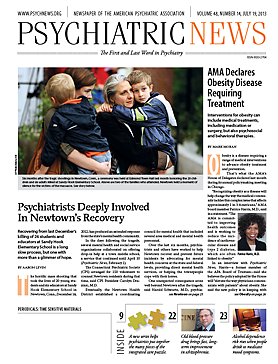Based on new data available since DSM-IV, some changes have been made to the criteria and the text for bipolar disorder; however, the essential elements of the clinical symptoms associated with the depressive and manic-hypomanic components are relatively unchanged.
Given the long delay from first symptoms to correct diagnosis of bipolar disorder in the community, criteria now include an emphasis on changes in activity and energy as well as mood in the context of mania and hypomania in the hope that emphasis on this more objective component of mania will lead to earlier detection. The diagnosis of bipolar I disorder, mixed type, requiring that the individual simultaneously meet full criteria for mania and for major depressive episode, is removed. Instead, a new specifier “with mixed features” has been added that can be applied to episodes of mania or hypomania when depressive features are present and to episodes of depression in the context of lifetime diagnoses or either major depressive disorder or bipolar disorder when features of hypomania are present.
1. Which of the following is a change made by DSM-5 from the DSM-IV criteria for bipolar disorders?
a) “increased activity” has been added to the A criterion for manic and hypomanic episodesb) bipolar disorder, mixed type, now requires a patient to simultaneously meet full criteria for mania and major depressionc) the removal of subsyndromal hypomania from the subtypes for bipolar not elsewhere classified (NEC)/NOSd) the stipulation that manic or hypomanic episodes cannot be associated with recent administration of a drug known to cause similar symptomse) the clinical symptoms associated with hypomanic episode have been substantively changed from DSM-IV.
2. Which of the following statements correctly describes the primary diagnostic difference between manic and hypomanic episodes?
a) manic episodes have a greater variety of symptoms than do hypomanic episodesb) manic episodes last for longer periods than do hypomanic episodesc) manic episodes do not include any psychotic symptomsd) hypomanic episodes do not cause clinically significant distress or impairmente) hypomanic patients generally have less insight into their illness
3. A 25-year-old graduate student presents to a psychiatrist complaining of feeling down and “not enjoying anything.” Her symptoms began about a month ago along with insomnia and poor appetite. She has little interest in activities and is having difficulty attending to her schoolwork. In taking a history, she recalls a similar episode one year prior that lasted about two months before improving without treatment. She also reports several episodes of increased energy in the past two years. These episodes usually last one to two weeks, during which time she is very productive and sees herself as more social and outgoing. She tends to sleep less during those times, but feels energetic during the day. Friends tell her that she speaks more rapidly during those times, but they do not see it as off-putting and in fact tell her she is more outgoing and clever during those periods. She has no medical problems, does not take any medications, or abuse drugs or alcohol. Which of the following is her most likely diagnosis?
a) bipolar I disorder, current episode depressedb) bipolar II disorder, current episode depressedc) bipolar I disorder, mixedd) cyclothymic disordere) major depressive disorder ■
